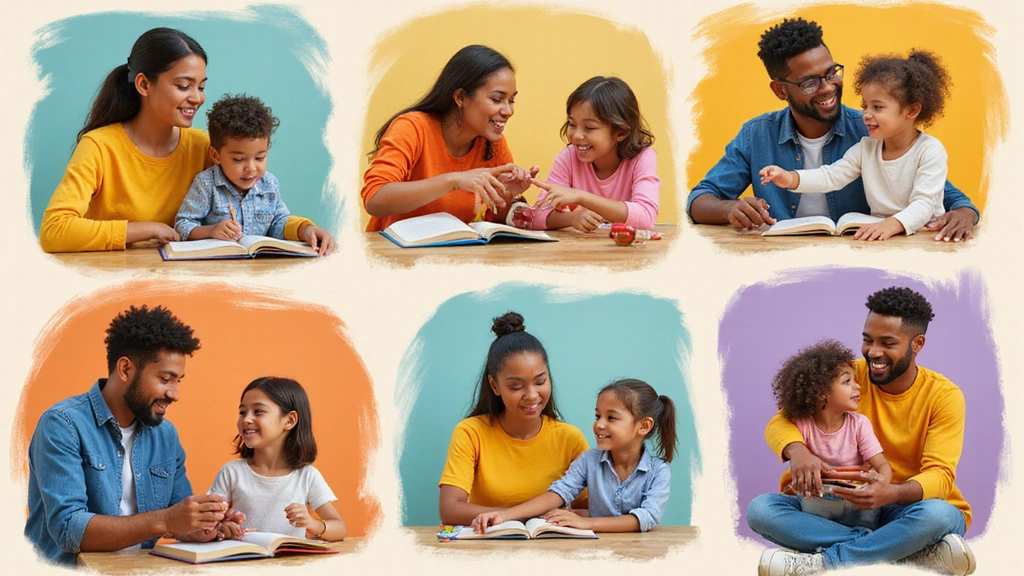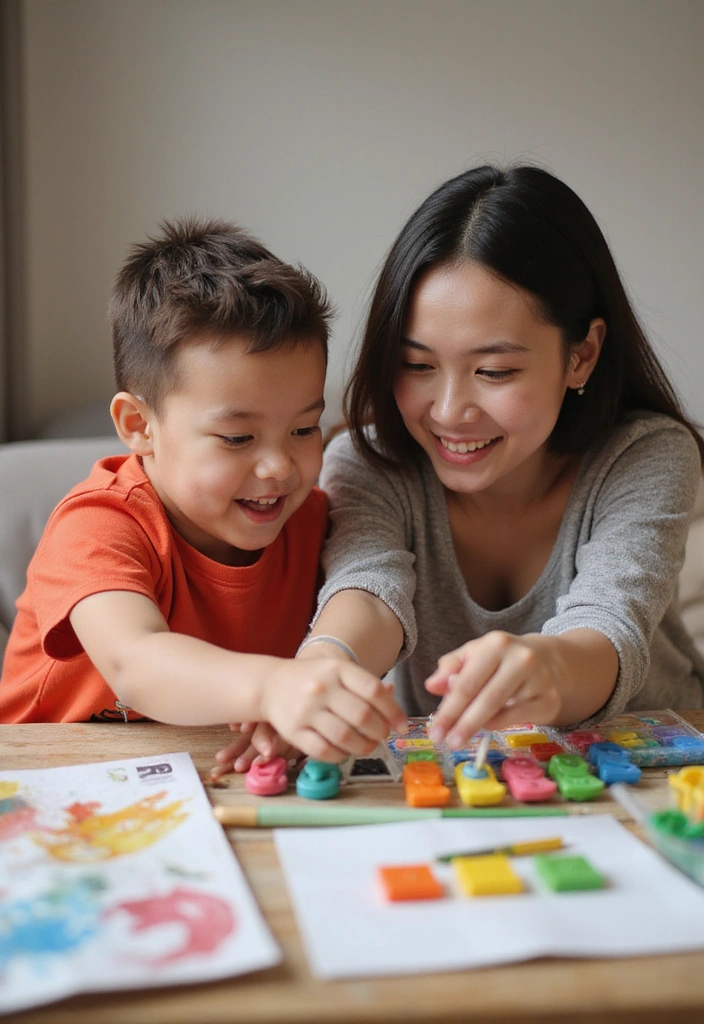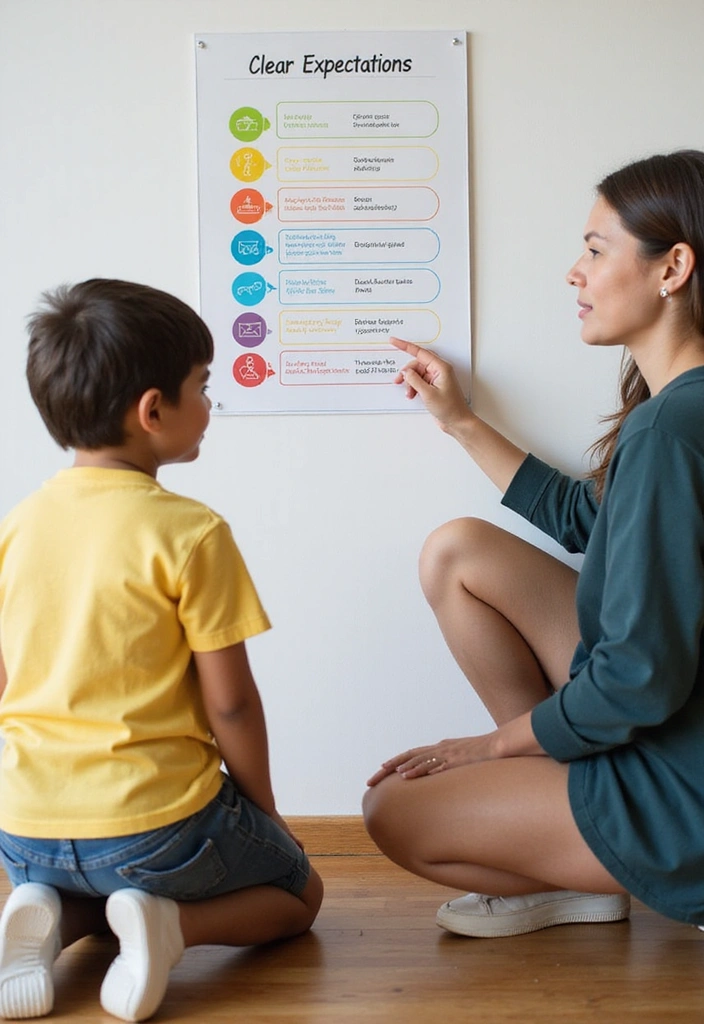Unlock stronger relationships with your kids! Discover 9 powerful communication strategies that foster trust, understanding, and a truly deep parent-child connection. Start building today!

Every parent knows that a strong bond with their child is essential for a healthy relationship. But, let’s be real: navigating that communication can sometimes feel like trying to solve a Rubik’s Cube blindfolded.
From playful chats to deep discussions, the way we communicate can make all the difference in understanding each other. Building a meaningful connection requires more than just words; it’s about sharing moments, listening actively, and showing empathy. This guide presents practical strategies that will not only enhance the way you talk to your child but also reinforce that special tie you share.
Get ready to explore some relatable, actionable ideas that can help bridge the gap between generations and make everyday conversations feel more fulfilling.
1. Share Your Stories

One of the best ways to connect with your child is by sharing your own experiences. Kids love hearing stories about their parents’ childhoods, and these narratives can open up conversations about values and lessons learned.
Instead of just telling them what to do, recount moments when you faced challenges or made mistakes. This gives them a chance to see you as a real person, not just a parent. Here are some tips:
– Relate your stories to their current experiences.
– Use humor to lighten the mood and keep them engaged.
– Encourage them to share their stories in return for a two-way conversation.
By weaving your tales into your talks, you’ll create a bridge of understanding and empathy.
2. Listen Actively

Listening is just as important as talking. When your child feels heard, it fosters trust and respect in your relationship. Active listening involves more than just nodding; it means being fully present in the moment.
Put away distractions, maintain eye contact, and show genuine interest in what they have to say. Here are some ways to practice active listening:
– Repeat back what they’ve said to confirm understanding.
– Ask open-ended questions to encourage deeper dialogue.
– Validate their feelings, even if you don’t necessarily agree with them.
These small efforts can transform your conversations into meaningful exchanges, making your child feel valued and understood.
3. Use Play as a Communication Tool

Play isn’t just for fun; it’s a powerful way to communicate with kids! Engaging in play activities opens up channels of communication that might be blocked during serious discussions.
By using games, role-playing, or even creative arts, you can help your child express their feelings and thoughts more freely. Try these strategies:
– Pick games that require teamwork, fostering collaboration.
– Use role-play to explore different scenarios and emotions.
– Be playful with your tone and body language to create a relaxed atmosphere.
When the mood is light, kids are more likely to open up about what’s on their mind.
4. Create Rituals for Connection

Rituals can bring a sense of stability and intimacy to your relationship. Whether it’s a bedtime story, a weekly game night, or a daily walk, these small practices can create space for open communication.
Having regular rituals gives you both something to look forward to and can lead to more in-depth conversations. Consider these ideas:
– Establish a “check-in” time each day to see how they’re feeling.
– Create a weekend tradition, like a breakfast outing or a movie night.
– Encourage them to share something new they learned during the week.
By prioritizing these rituals, you show your commitment to making time for each other amidst the chaos of daily life.
5. Practice Empathy

Empathy goes a long way in fostering strong communication. When kids know you can relate to their feelings, they feel safer opening up. Practice empathy by acknowledging their emotions and showing understanding.
Here are ways to cultivate empathy in conversations:
– Reflect back their feelings by saying, “That sounds really tough.”
– Share your own feelings in similar situations to show relatability.
– Encourage discussions about emotions during calm moments, rather than when they’re upset.
By modeling empathy, you teach your child to navigate their own emotions and recognize those of others, enhancing your connection.
6. Encourage Expression Through Art

Art can be a powerful medium for communication, especially for children who might struggle with verbal expression. Providing them with opportunities to create can help convey their thoughts and feelings in unique ways.
Here are some ideas on how to use art for communication:
– Set up a dedicated art space at home to encourage creativity.
– Ask them to draw or paint their feelings and discuss their artwork together.
– Join them in art projects to foster collaboration and bonding.
Through art, children can express complex emotions that might be hard to put into words, facilitating deeper connections.
7. Model Healthy Communication

Children learn a lot by watching their parents. By modeling healthy communication skills, you can teach them the importance of expressing themselves clearly and respectfully.
Show them how to manage conflicts, express feelings, and listen to others. Here are some practices:
– Use “I” statements to express your feelings, like “I feel worried when…”
– Maintain calmness during disagreements to set an example.
– Encourage them to voice their opinions, reinforcing that their thoughts are valued.
By demonstrating these behaviors, you reinforce a foundation of communication that can last a lifetime.
8. Stay Open to Feedback

Encouraging your child to voice their thoughts about your communication style can be invaluable. It shows them that you value their opinion and are willing to grow as a parent.
Ask for feedback about how you communicate and be open to constructive criticism. Here’s how to approach it:
– Have regular check-ins where they can share their feelings.
– Create a safe space where they feel comfortable expressing themselves.
– Thank them for their input and discuss ways to improve together.
This reciprocal feedback can enhance your connection and demonstrate that communication is a two-way street.
9. Celebrate Small Wins

Lastly, don’t underestimate the power of celebrating small victories in communication. Whether it’s your child expressing themselves more openly or resolving conflicts peacefully, acknowledging these moments can reinforce positive behavior and build confidence.
Celebrate together by:
– Offering words of affirmation and encouragement.
– Sharing a special treat or activity to mark the occasion.
– Reflecting on how far they’ve come in expressing themselves.
These celebrations remind your child that their efforts in communicating are valued and worthy of recognition, strengthening your bond.
Finally

Deepening your parent-child connection through effective communication is a journey worth taking. Each strategy offers unique ways to enhance understanding, respect, and love in your relationship.
By implementing these approaches, you pave the way for open dialogue and a strong emotional bond that lasts a lifetime. Remember, it’s all about the moments you share, whether big or small.







